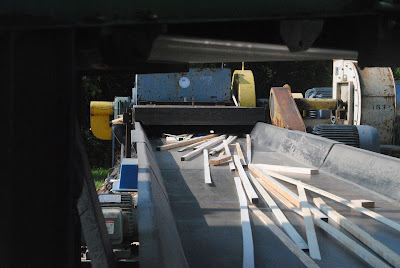Today we drove to Gaudineer Knob to look at the second strand of virgin forest. This forest is only in existance because of a surveyors error. It is also home to the Cheat Mountain Salamander. What kind of wildlife and biodiversity would you expect to see in a virgin forest near the top of a mountain? Take a look at some of the pictures below and see if you can identify different species of trees.
"The Durbin Rocket"--
We finished up the day riding on another restored logging steam train. This was different from Cass in the fact that there were no steep grades for the engine to pull and push the cars. We followed along the Greenbrier river and were able to see some of the foundations of a lumber company that used to sit on the banks of the river.
Another difference on this train was the fact that you did not have to stay on one car, you could travel between an open car, an old dining car, a passenger car and a caboose. It was neat to be able to experience the ride in a variety of ways.
On our trip back, we had to stop and fill up the tank from the local creek. Using the same process that the Shay engine used to "siphon" the water into the tank.
I found it just as interesting as Cass but in different ways.
"The Durbin Rocket"--
We finished up the day riding on another restored logging steam train. This was different from Cass in the fact that there were no steep grades for the engine to pull and push the cars. We followed along the Greenbrier river and were able to see some of the foundations of a lumber company that used to sit on the banks of the river.
Another difference on this train was the fact that you did not have to stay on one car, you could travel between an open car, an old dining car, a passenger car and a caboose. It was neat to be able to experience the ride in a variety of ways.
On our trip back, we had to stop and fill up the tank from the local creek. Using the same process that the Shay engine used to "siphon" the water into the tank.
I found it just as interesting as Cass but in different ways.
Filling up in the creek . . .




























